Julian McKinnon – 26 May, 2016
You saw art, some of it good, some of it bad, some of it somewhere in between. You saw attractive people in expensive clothing. You felt the warmth of inclusion and the coldness of its opposite in the same brief but layered exchange. You encountered the art world, with all its woe and wonder, conveniently wrapped in an 180 metre plastic tube. It had class, it had farce, it had serious looking folks in suits.
Downtown Auckland
Forty dealer booths representing galleries from New Zealand, Australia, the Cook Islands and Chile
Auckland Art Fair 2016
26 May - 29 May 2016
A suit is a kind of shibboleth. It signals a particular value set, identifying its wearer as a member of a group. People behave differently toward you when you’re walking around in one, as opposed to your normal mode of dress (though if your normal mode of dress is characterised by a munted and paint splattered hoody this should perhaps be considered unsurprising). Camouflaged in the costume of the moneyed and status oriented, you bandy your way into The Cloud, an uninsulated strip of white PVC twisting its way along Queens Wharf. It’s here, it’s now, and it’s big (well, by local standards at least). It’s nothing other than the Auckland Art Fair, 2016.
Stern faced security staff usher you in. A bar is the first thing that comes to view. Scrummaging your way through the crowd you eventually make it to the front where what you thought was an entirely reasonable question is met with a confused stare. No, there aren’t any non-alcoholic drinks. Not even water. This is an art fair, baby, we want you to get tanked, lose all sense of responsibility, and blow all of your cash. It’s not Art Basel or Hong Kong, but the principal is the same. Turn up, get trashed, spend money. If you’re rich, behave badly. Oh, and there’s some art.
The 2016 edition of Auckland Art Fair brings together exhibitions from forty contemporary art galleries. The majority of exhibitors hail from New Zealand and Australia, with notable inclusions from Rarotonga and Chile. It’s predominantly a trade fair, yet also provides space for the showcasing of art from the here and now. For exhibiting galleries there’s a prize for “quality of presentation, curatorial sensibility and contribution to arts development and discourse in the Pacific region” up for grabs (this prize is sponsored by My Art, a service offering interest free loans to art buyers at the fair). Most of the big hitters in the New Zealand scene have a presence.
Now you’re into the Art Fair proper. It’s the same principle of politics and social anthropology as your typical local art opening, just on a bigger scale. People greet you enthusiastically, though their eyes are forever scanning over your shoulder. Don’t let it bother you, this is normal. Truth be told you’re doing it too. You see someone you sort of know and wonder if you should say hi. You turn around to see them turning away from you. Just as you look away you’ll see them look back, though you’re now committed to moving in another direction. You’re left confused and wondering whether you just snubbed them, they just snubbed you, or you both just snubbed each other. There’s also the possibility no snubbings took place at all. All measure up as equally likely.
Then, some familiar and gorgeous face belonging to someone you’ve often seen though never really met (but think is all kinds of crazy hot) drifts into view. “Maybe now’s the moment…” you think for a pulsing second. They drift out of view. “…or maybe it’ll just slip on by.”
Bath Street Gallery’s colourful final offering is definitely worth checking out, as are the luminous abstractions of Fox/Jensen. Wellington’s Bartley and Company prominently display recent Wallace Award winner Roger Mortimer’s paintings. Mortimer’s work glows, radiating some otherworldly light. Melbourne’s Tristan Koenig Gallery, and Sydney’s Martin Browne Contemporary also offer eye-catching artworks that are worthy of closer inspection.
You move past the booths. Stallholders smile warmly; you’ll have the full focus of their attention for five seconds. Business cards will be pressed into your hand as an invitation to move on. Welcome to the purgatory of art writing. Everyone sort of wants to talk to you, but mostly doesn’t. Because in the scheme of things the words you pen are vaguely important, though not nearly as important as dirty, sexy money. We all know that.
The need to provide art that engages and dazzles, and more importantly sells is at the forefront for stallholders. This takes us straight to the central paradox of art in the 21st century (and perhaps all time periods past, present and future). Art must express, nourish, and heal; it has to challenge its viewer whilst encapsulating existential enquiry and social critique. It has to speak of and to the inner world, riddled as it is with chaos, confusion, and sometimes harmony. Yet, all this is for nothing without a sound marketing angle. The upbeat Paul Nache of Gisborne presents works by Scott Gardiner, Evan Woodruffe and Glen Hayward that in turn satisfy, dazzle and confound. Hayward’s work in particular makes an admirable effort to fulfil all of the above-mentioned criteria.
You discover your new favourite paintings, shimmering, spectacular, beautiful, only to have your excitement dashed less than 30 minutes later. Someone who knows about these things informs you that the works are pretty much a knock off of some dude in New York, and apparently Australasian artists do that quite a lot. Disillusionment will follow. Though with it a sense of relief that this discussion occurred before (rather than after) you’d blown a ginormous cloud of billowing smoke up the rear end of these paintings in an article you’re about to write.
Mutt Gallery, from Santiago, Chile, brings something visually unique to the fair. Gallerist Nicolas Mardini explained that after exhibiting at Sydney and Hong Kong art fairs, he had decided to participate in Auckland. “The Australasian market is now my focus,” he said confidently. Mutt is showing a colourful array of mixed media works by Sebastian Vargas, a Berlin-based Chilean. The aesthetic and graphic sensibilities of these works are of a different palette, context, and visual language to anything else at the fair.
A moment comes when you make eye contact with someone you recently met and who may well contract you to work with them in the future, presenting a perfect opportunity to remind them of you and your talents. You smile and walk confidentially over, ready to engage in some pleasantries and demonstrate your razor sharp wit, only to realise before you’ve even begun that you’ve already said, “how are you?” twice. To compound this problem, they’ve responded in the customary fashion ending in a reciprocal enquiry. Twice. There is no way whatsoever that they missed one or the other of those utterances. In the space of two brief but identical sentences you’ve blown away from a searing stream of sharp-witted banter into a treacherous eddy of awkwardness. Fear not. Your nimble mind has summoned the perfect film quotation, immediately suggesting you invoke Austin Powers’ gloriously awkward “Allow myself to introduce…(floundering pause)… myself”.
But before you can utter it, a panic signal has run through your synapses alerting you to how truly terrible that will sound if they don’t know the reference. So you steer course instead for an exaggerated and intentionally self-parodying grimace, the nuances of which anyone who knew you well would immediately read in all its complex layering as wry, sardonic and funny as fuck. However the person to whom you’ve just cracked your most intentionally awkward grin doesn’t really know you at all and that eddy just became a whirlpool. Fortunately, with an effortless grace, they disengage and move on to conversation with someone else that saves you from the very real possibility of conversational apocalypse.
Gow Langsford Gallery make the biggest statement of the fair. A monolithic work of mirrored Perspex by Dale Frank is positioned next to a large-scale signature-style painting by Judy Millar. The two works are each on their own merits spectacular. Yet side by side they engage some strange alchemy, producing an effect greater than the sum of its parts. This was the standout moment of the fair for this commentator.
As you’re starting to wind down someone’s hammered ex-girlfriend will engage you in a conversation that you’ll wish you had that same effortless grace to discontinue. Not because this intoxicated individual isn’t perfectly nice. It’s just that they’re plastered and you’re not. This (as any non-smashed participant in this type of conversational duad will tell you) isn’t a good combination. You’ll eventually make your way toward the exit and reflect on the evening. You saw some good artworks amongst the pretenders. You enjoyed a few moments of genuine connection amidst the free for all. You got to shake hands with a writer you respect and they seemed thoroughly decent. Best you forget that radiant hottie that you’ve never really met and didn’t meet again, cause it’s getting late and it’s a bit cold. It’s time to retreat to the sanctity of home.
You saw art, some of it good, some of it bad, some of it somewhere in between. You saw attractive people in expensive clothing. You felt the warmth of inclusion and the coldness of its opposite in the same brief but layered exchange. You encountered the art world, with all its woe and wonder, conveniently wrapped in an 180 metre plastic tube. It had class, it had farce, it had serious looking folks in suits.
What would you say to a general public? It’ll confound, it’ll dazzle, it’ll if-you’re-entirely-honest a little bit underwhelm. It’s a spectacle, on a New Zealand scale - modest in its immodesty, tight-arsed in its extravagance, reverent in its irreverence. It’s enough to make you stop, think, and go write a convoluted second person narrative. It’s also probably the most interesting thing happening in Auckland this weekend. So, if you’re at a loose end then get on your glad rags, bust out your bling, and brace yourself for a credit-card hangover from hell. It’s here, it’s now. It’s Auckland Art Fair 2016.
Julian McKinnon
This is the first of three articles on the Auckland Art Fair 2016
Recent Comments
John Hurrell
Here are two juicy discussions on the pros and cons of art fairs: http://www.vulture.com/2018/05/jerry-saltz-break-the-art-fair.html https://news.artnet.com/opinion/kenny-schachter-on-jerry-saltz-on-art-fairs-a-jerry-saltz-rebuke-ks-in-defence-of-fairs-1280636
Sue MacDonald
Pithy and to the point!
Alan MacDonald
A good read.
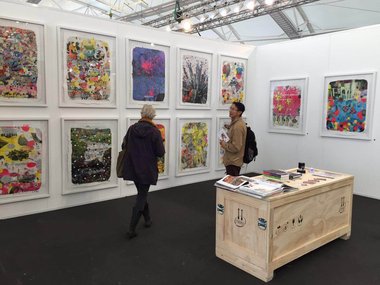
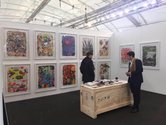
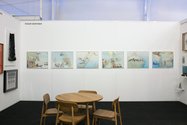
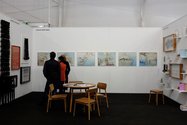

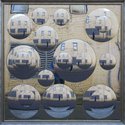
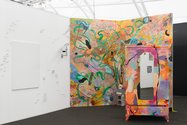
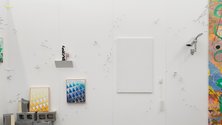
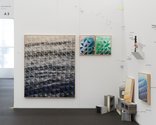
 Advertising in this column
Advertising in this column Two Rooms presents a program of residencies and projects
Two Rooms presents a program of residencies and projects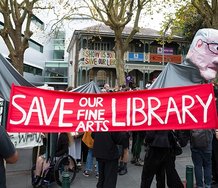
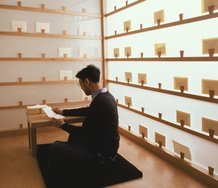
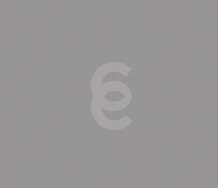
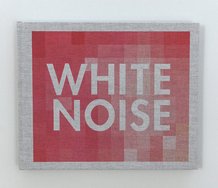
This Discussion has 4 comments.
Comment
Matt Moriarty, 11:39 a.m. 30 May, 2016 #
Haha - Great read Julian, makes me glad I couldn't attend!
Alan MacDonald, 10:05 a.m. 4 June, 2016 #
A good read.
Sue MacDonald, 11:07 a.m. 4 June, 2016 #
Pithy and to the point!
John Hurrell, 10:39 p.m. 30 May, 2018 #
Here are two juicy discussions on the pros and cons of art fairs:
http://www.vulture.com/2018/05/jerry-saltz-break-the-art-fair.html
https://news.artnet.com/opinion/kenny-schachter-on-jerry-saltz-on-art-fairs-a-jerry-saltz-rebuke-ks-in-defence-of-fairs-1280636
Participate
Register to Participate.
Sign in
Sign in to an existing account.